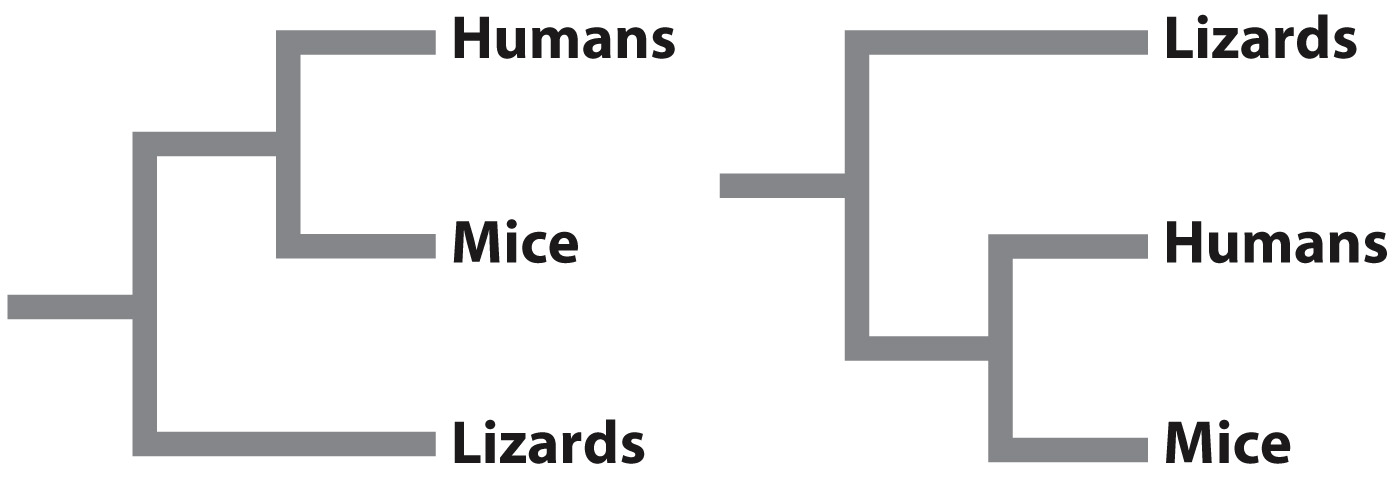The search for sister groups lies at the heart of phylogenetics.
Two species, or groups of species, are considered to be closest relatives if they share a common ancestor not shared by any other species or group. In Fig. 23.2, for example, we see that frogs are more closely related to salamanders than to any other group of organisms because frogs and salamanders share a common amphibian ancestor not shared by any other group. Similarly, lungfish are more closely related to tetrapods than to any other group. A lungfish may look more like a fish than it does an amphibian, but lungfish are more closely related to amphibians than they are to other fish because lungfish share a common ancestor with amphibians (and other tetrapods) that was more recent than their common ancestor with other fish (Fig. 23.2).
Groups that are more closely related to each other than either of them is to any other group, like lungfish and tetrapods, are called sister groups. Simply put, phylogenetic hypotheses amount to determining sister-
466
Closeness of relationship is then determined by looking to see how recently two groups share a common ancestor. Shared ancestry is indicated by a node, or branch point, on a phylogenetic tree. Nodes can be rotated without changing the evolutionary relationships of the groups. Fig. 23.3, for example, shows four phylogenetic trees depicting evolutionary relationships among birds, crocodiles and alligators, and turtles. In all four trees, birds are a sister group to crocodiles and alligators because birds, crocodiles, and alligators share a common ancestor not shared by turtles. The more recent a common ancestor, the more closely related two groups are. Evolutionary relatedness therefore is determined by following nodes from the tips to the root of the tree, and is not determined by the order of the tips from the top to bottom of a page.

Quick Check 1 Does either of these two phylogenetic trees indicate that humans are more closely related to lizards than to mice?

Quick Check 1 Answer
No. The two trees are equivalent. The node shared by humans and mice is simply rotated in one tree. In both trees, the closest relative of humans is mice because they share a node (where they split) not shared with lizards.